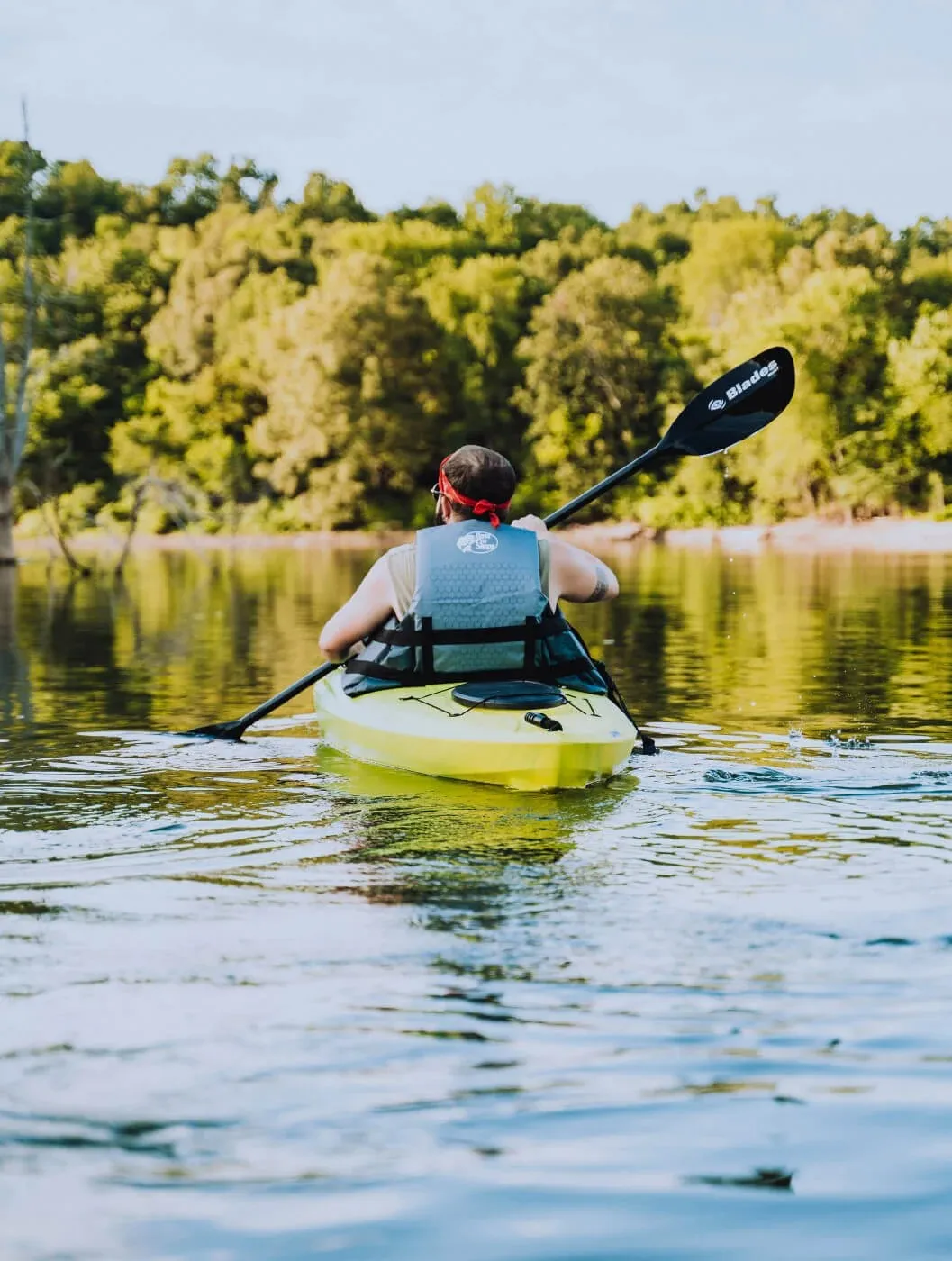NWA Outside
Exploring Outdoor Recreation in Northwest Arkansas
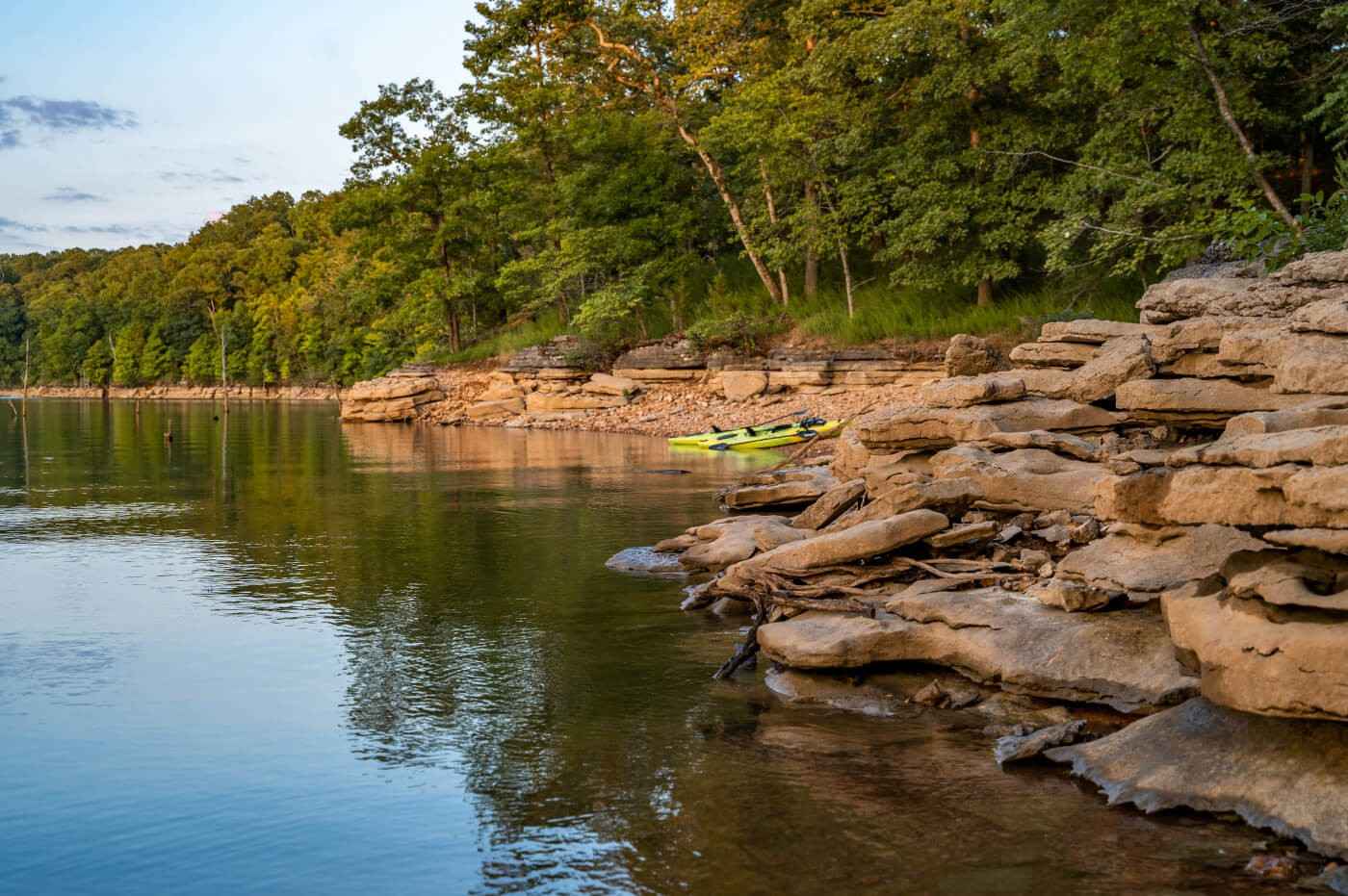
Beginners' Guide To Kayaking in Northwest Arkansas
Kayaking is a growing outdoor recreation activity across the United States and Northwest Arkansas. Kayaks are a great way to explore the waters of Northwest Arkansas because they are nimble and have an easily conquerable learning curve. Kayaking may seem intimidating to a beginner because of the cost and the intimidation that comes with sitting on the open water in a small boat. No matter the fears, this guide will help you get into kayaking and exploring the open waters in no time.
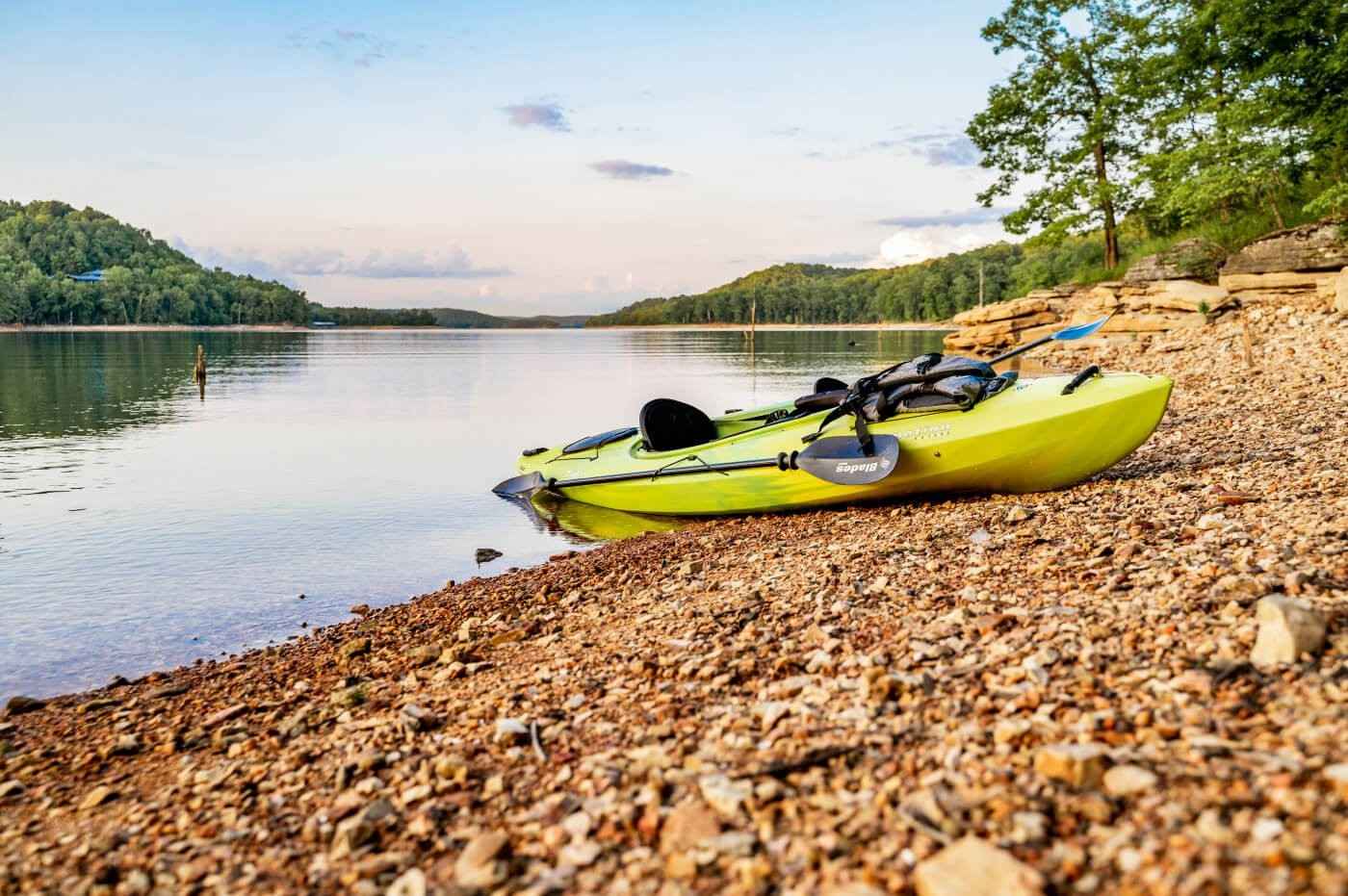
A pair of kayaks beached on the shores of Beaver Lake near Van Hollow Road
Why Go Kayaking?
Kayaks are a great way for beginner boaters, families, and the adventurous type to enjoy the many waterways and lakes of Northwest Arkansas. There are a lot of reasons people get into kayaking. It could be for:
- Fishing
- Exploring (marine life, shores, and banks of rivers)
- Seeking a great way to exercise
- For personal enjoyment
No matter the reason, kayaking allows you to connect with nature and enjoy the great outdoors. Another reason kayaking is becoming so popular is because it is so accessible. You can launch a kayak from almost anywhere onto a body of water. That means you can launch from a dock, a river bank, boat ramps, or even beaches on the ocean. This means almost anywhere you travel or adventure, especially in Northwest Arkansas, there is a good chance there will be somewhere for you to take your kayak nearby. Kayaking is also a great social and family activity since you can choose your destination based on your experience level. That could mean floating in a calm lake and having a picnic on one of the shorelines, or it could be the fast-paced excitement of white water kayaking. No matter what type of kayaking or the location you choose, kayaking will be a fun experience for all involved.
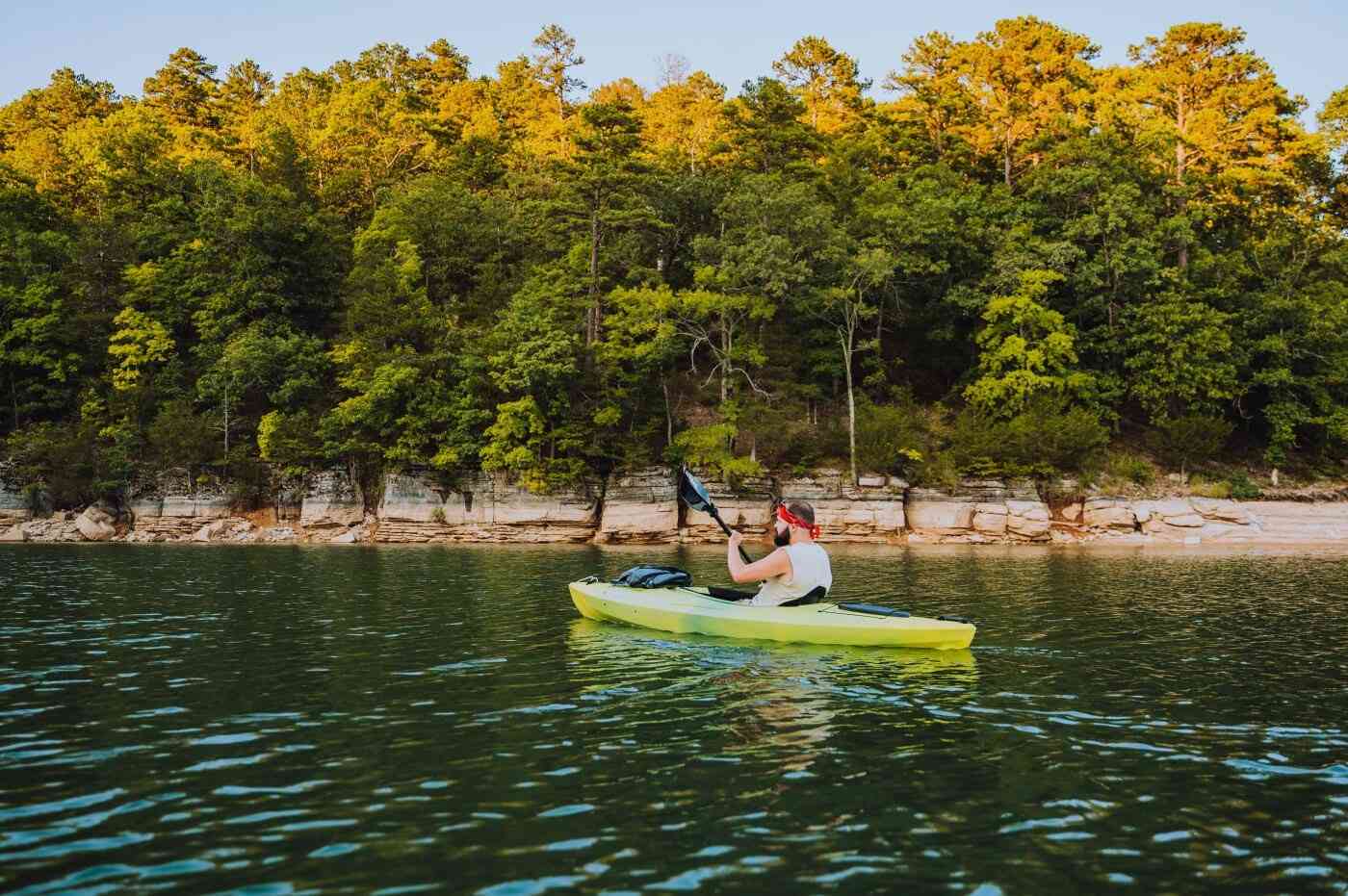
Paddling one of the many coves of Beaver Lake
Types of Kayaks
There are two main types of kayaks which are Sit-on-top and Sit-inside kayaks. There are several subcategories of each type of kayak as well. Which subcategory you choose depends on several factors, such as the type of water you plan to kayak (flat water vs. whitewater and rapids), skill level and experience, and even the ease of transportation. These factors are a little more advanced, so we will reference the two main categories within this guide.
Sit-on-top: Sit-on-top kayaks are very stable and a more beginner-friendly kayak. They tend to be easier to get on and off, which makes it easier to go for swims and explore shores and river banks. This type of kayak is just how it sounds; the person sits on top of the flat surface of the kayak. Sit-on-top kayaks are for recreation on calmer waters like lakes or slow-moving rivers. Sit-on-top kayaks are also a fisherman's favorite due to the ease of casting and being able to have more movement and flexibility.
Sit-inside: Sit-inside kayaks are where you sit inside the cockpit of a kayak. Your legs are physically inside the hull of the kayak and are similar to a canoe in that regard. Sit-inside kayaks can be more challenging to get in and out of and may require some practice. Sit-inside kayaks are usually more stable since your center of gravity is closer to the water. This provides sit-inside kayaks with an advantage over sit-on-top if you plan to navigate rougher waters.
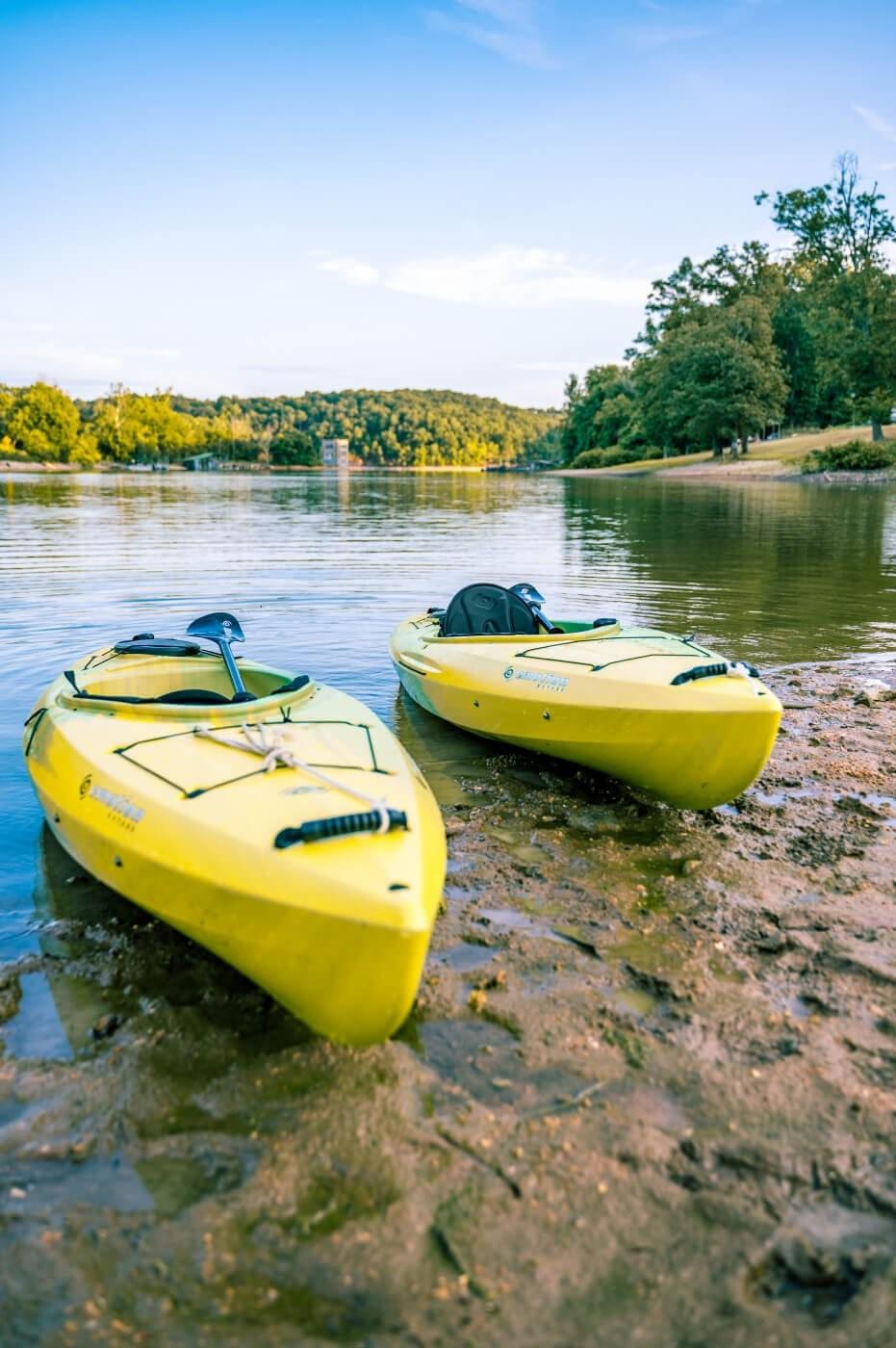
Kayaks can be docked on virtually any shore, allowing you to explore all kinds of shorelines and coves.
Learning How to Kayak
These are some basic ways to get started kayaking. More advanced techniques will take practice and time. Getting lessons is one of the best ways to get a handle on kayaking and ensures you have a safe kayaking experience.
Sitting on/in a kayak: When you sit on or in a kayak, you want to make sure you sit up straight, keep your legs out in front of you, and keep your knees slightly bent. This will give you the best stability and ensure your strokes use power from your body, not just your arms.
Paddling:
- To begin, grab your paddle and center the middle of the paddle with your head or chest, making it so you will have even strokes and the power to propel yourself forward.
- For beginners, make sure your paddle blades are even with each other and look symmetrical. If anything is canted, this is called "feathering" and is a more advanced paddling method. So pay attention to the blades and keep the scooped side facing you.
- While paddling, always keep a more relaxed grip. A tight grip on the paddle will add more pressure to your hands and will lead to fatigue quicker.
- Now that you are holding your paddle correctly, you want to do a basic stroke. To do this, you will put one end of the paddle in front of you and enter the water up by your feet. From here, push the paddle blade back towards your hip. From there, lift that side out of the water, have the opposite paddle blade enter the water by your other foot, and then push back like you did before. Continue alternating this movement, and you will propel yourself forward.
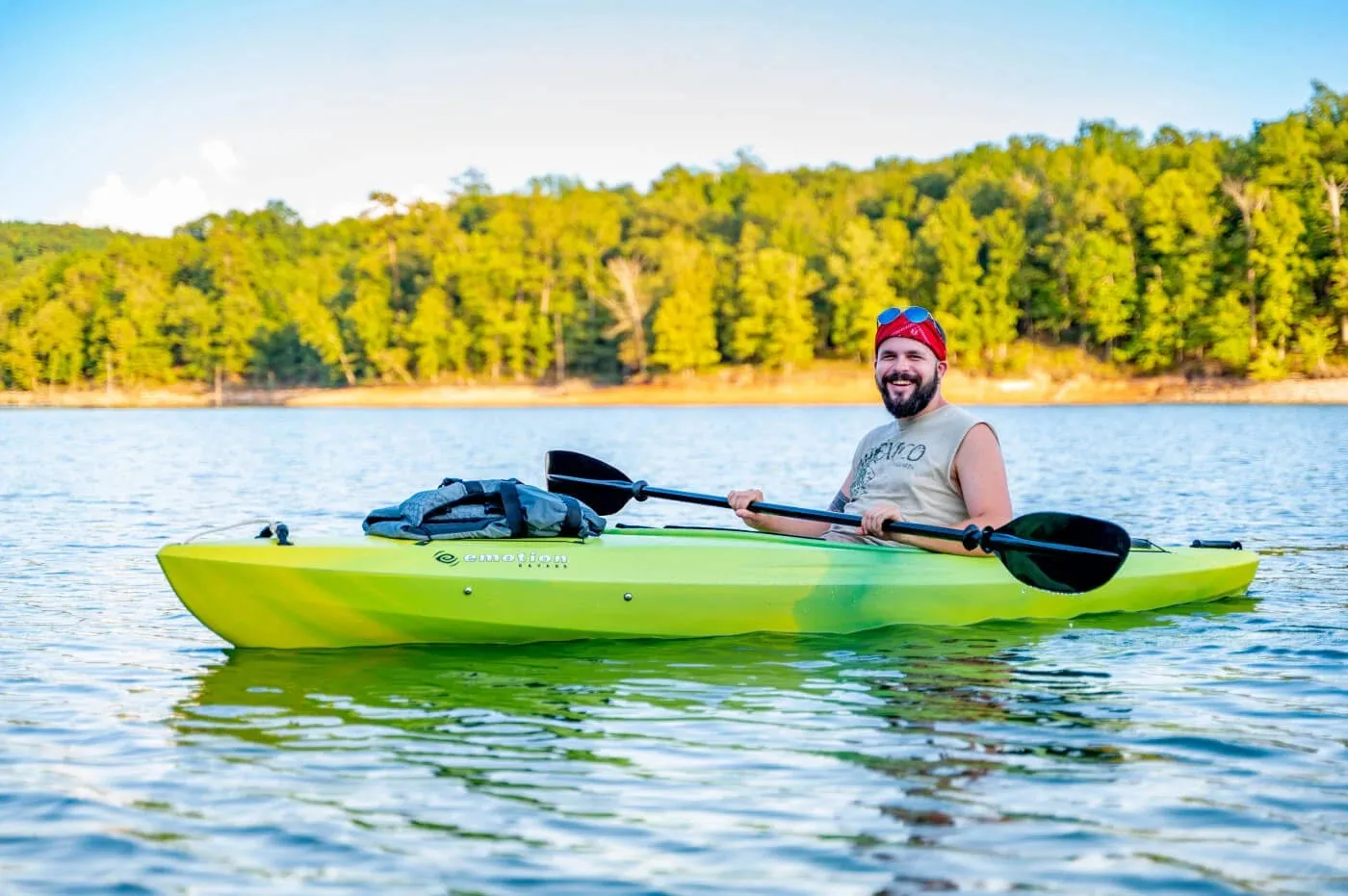
Proper technique of holding a kayak paddle
Basic stroke, pushing water back towards hips. Note: blades are facing the correct direction as well.
What Gear Should You Bring?
These few things are some of the most essential items to help you have a safe and enjoyable outing on the water. Always check local and state regulations on kayaking and if any additional gear is required by law before going out.
- Kayak
- Paddle
- Life-vest
- A whistle or horn (required in Arkansas)
- Dry bag (for storing your phone, wallet, keys, and anything else you do not want getting wet)
- Water & snacks
- Sun protection (sunscreen, sunglasses, hat, or helmet)
- Clothes and shoes/sandals that dry out quickly
- A friend or family member. Always bring someone else with you kayaking. If you have to go alone, let people know your route and what times you will be on the water.
Acquiring a Kayak
Kayaks can be expensive to buy, and the endless options available can be daunting. However, Northwest Arkansas has fantastic local resources to make your kayaking trip accessible.
A great resource to locals is the University of Arkansas's University Recreation Department, also known as UREC. At UREC, they offer full equipment rentals, which include: paddles, life-vests, and kayaks, at discounted rates to students, UREC members, and faculty/staff (Non-UREC members). This is an excellent place for students or faculty to get the equipment they need to get on the water and start exploring the waters of Northwest Arkansas for a lot cheaper than purchasing or renting a kayak from elsewhere. For Non-UREC members, there are still options available for renting a kayak in Northwest Arkansas. Some options available include; The Beaver Lake Outdoor Center in Rogers, AR, and Lake Fayetteville Boat and Bike Rental in Fayetteville, AR.
If you want to purchase a kayak, there are some great options available in Northwest Arkansas for that as well. Some of the ones I recommend are:
These places have great options and friendly and knowledgeable staff to help you find the perfect kayak for your adventures out on the water.
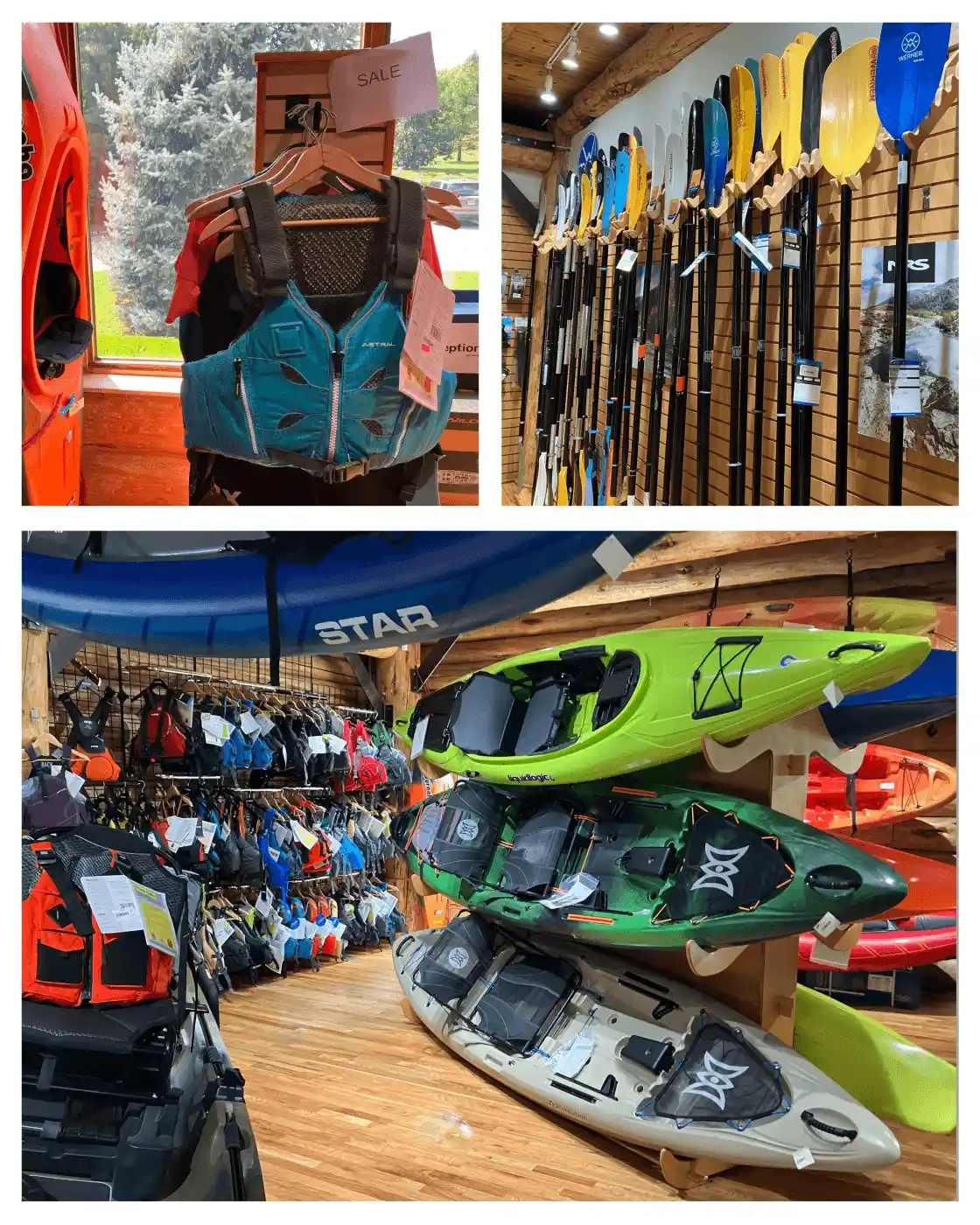
Various kayaks and accessories can be found at local outdoor and sporting goods shops.
Where Should You Go Kayaking? 5 Favorite Spots:
Now that you have rented or own a kayak and packed all the essentials, it is time to get out on the water. One of the great things about Northwest Arkansas is there are so many easily accessible locations for you to get out floating in no time.
Beaver Lake: Beaver Lake and Hobbs State park are easily accessible to anyone in Northwest Arkansas. Beaver Lake has dozens of areas you can launch your kayak. A quick search of boat ramps will give you an idea of all the locations you can launch your kayak easily. Although these areas may be a little more crowded and have larger boats present, which can be intimidating to some beginners. For a calmer experience, take the Van Hollow Road off Highway 202 until it ends at the gravel/dirt boat ramp. This cove is usually quiet, and you will likely not see anyone besides the occasional hiker or fellow kayaker. The water is also as smooth as glass and makes for a great day trip. With miles of shoreline and beaches to explore and an excellent place for fishing, Van Winkle Hollow is one of our recommended locations for kayak beginners or visitors of NWA.
Lake Fayetteville: Lake Fayetteville is another great lake to kayak and float. This family-friendly lake is a city park located only 8 miles north of campus. Lake Fayetteville made this list due to its proximity to campus but also because of how easily accessible it is. At Lake Fayetteville, you can rent kayaks from the Boat Rental Center. Additionally, there are adventures through Fayetteville Parks and Rec's Outdoor Fayetteville program. These adventures are usually sunset kayak tours where you will get the opportunity to learn kayaking skills and explore the beautiful Lake Fayetteville. Boating Permit Required
Lake Sequoyah: Lake Sequoyah is one of the hidden gems of Northwest Arkansas. The almost 1,800-acre park is owned by the city of Fayetteville and is only 7 miles east of campus. Just head east on MLK Blvd from campus to get to Lake Sequoyah. This unique lake will have visitors feeling like they are floating in a swamp on the delta. Lake Sequoyah is a no-wake lake that keeps it calm and quiet, making it the perfect day trip for students and faculty at the University. Lake Sequoyah is also known for its fishing and the large population of Bass. Boating Permit Required
Siloam Springs Kayak Park: If you are feeling more adventurous and want to tackle the challenge that is whitewater kayaking, then the City of Siloam Springs Kayak Park is a perfect choice. The park is free to all users and is open from 5:30AM to 11:00PM unless water levels are too dangerous. Situated along the Illinois River with rapids flowing between 200 to 600 cubic feet per second, the Siloam Springs Kayak Park is an adventure we recommend for people seeking to get into whitewater kayaking. At this time, there are not many amenities at the park, so be sure to bring everything on the essential list above.
Buffalo River: The famous 150-mile-long Buffalo River had to make this list. Being America's first National River, the Buffalo is the pride and joy of the Ozark rivers. The headwaters of the Buffalo offer excellent whitewater kayaking opportunities, while downstream can provide calm waters and fantastic scenery. There are many launching points for kayaks on the Buffalo, and a lot of that access is found on the National Park Service website. One downside of the Buffalo River is floating is very seasonal (March to June) due to water levels. So before you embark and explore the Buffalo National River, check the water levels.
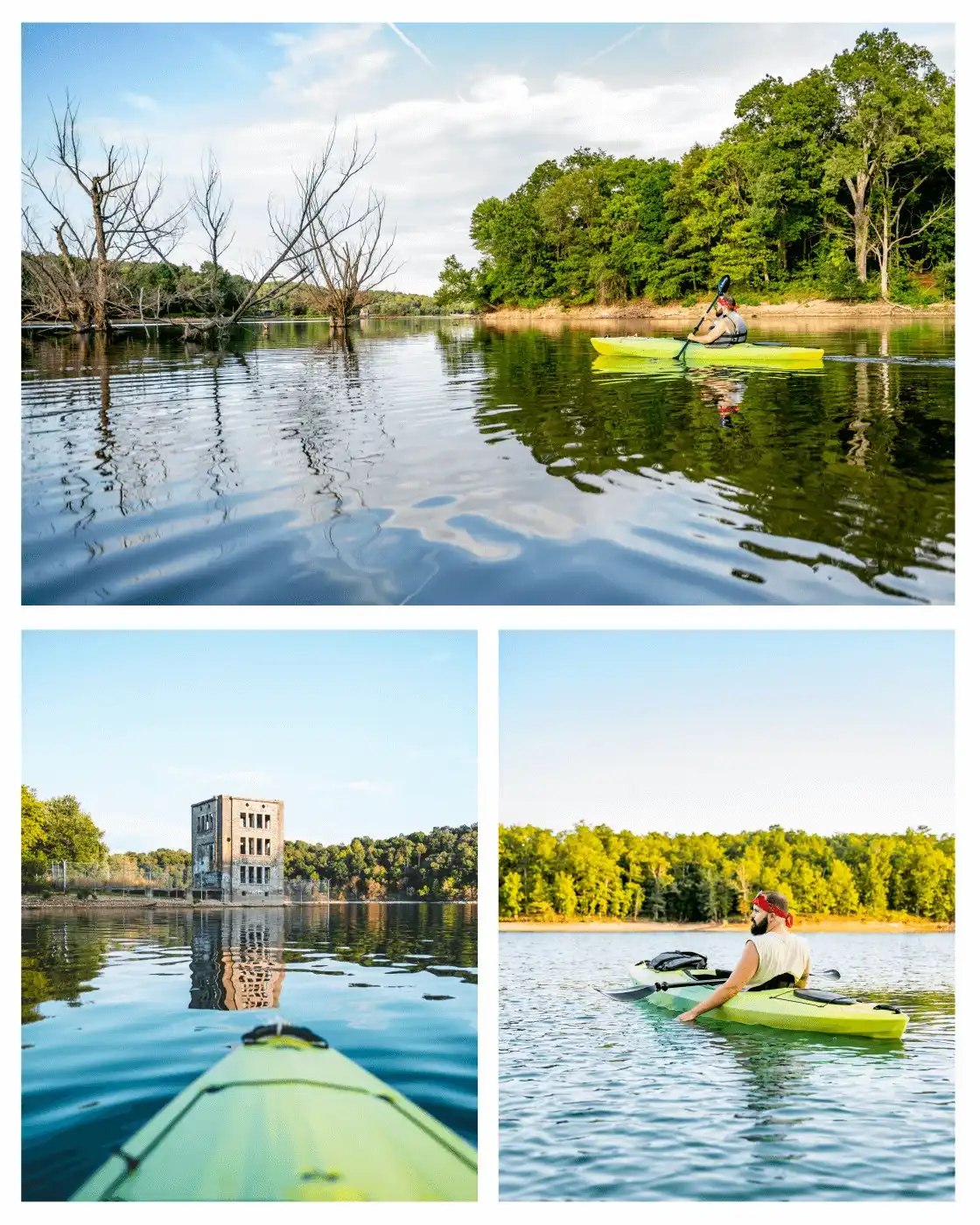
Kayaking is great for exploring a lot of places you might not have been able to access from roads.
